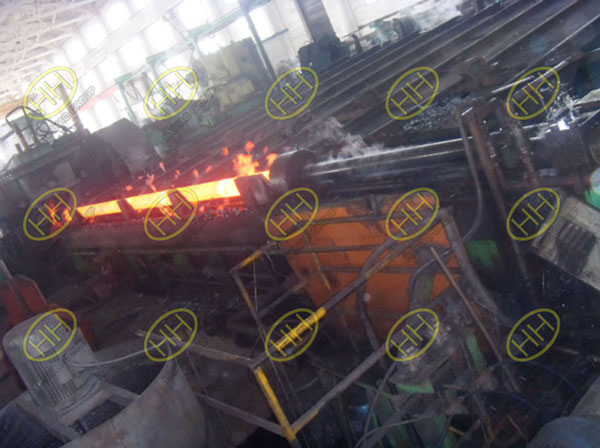Heat treatment method of forgings after forging
The purpose of heat treatment of forgings after forging is to adjust the hardness of the forgings and improve the cutting performance; eliminate the internal stress after forging; refine and uniform the coarse grains during the forging process to prepare the parts for heat treatment.
The commonly used post-forging heat treatments include the following:
1.Fully annealed
Eliminate the coarse and uneven structure caused by the forging process, refine the grains, eliminate the residual stress of the forging, reduce the hardness, improve the machinability, and prepare the structure for the subsequent heat treatment of the parts. Complete annealing is generally applicable to hypoeutectoid steels.
2.Spheroidizing annealing
Obtaining spherical cementite and ferrite structure not only reduces the hardness, but also makes it easy to obtain a smooth surface during cutting, and it is not easy to produce deformation cracks during subsequent quenching. Spheroidizing annealing is suitable for high carbon steel and high carbon alloy tool and die steel.
3.Isothermal annealing
Obtain a more uniform structure than complete annealing, which effectively eliminates forging stress and reduces hardness. In important large forgings, it can also be used to diffuse hydrogen to prevent white spots. Moreover, relatively complete annealing can shorten the annealing time and improve production efficiency.
4.Normalizing
It can obtain finer pearlite and refine the structure; improve the strength and toughness of forgings, reduce internal stress, and improve cutting performance; for hypereutectoid steels, network carbides can be eliminated.
5.High temperature tempering
Reduce hardness, reduce or eliminate stress generated during normalizing cooling, and improve plasticity and toughness. Suitable for alloy steel with too high hardness after normalizing.
6.Quenching and tempering treatment
It enables the forging to obtain good comprehensive mechanical properties. Quenching and tempering treatment is generally applicable to medium carbon steel and medium carbon alloy steel.
7.Forging and quenching
After forging and forming, the forging is directly quenched by the waste heat. Because the strengthening effect that occurs due to forging deformation is retained during quenching, its strength, plasticity and toughness are higher than conventional quenching treatment.

